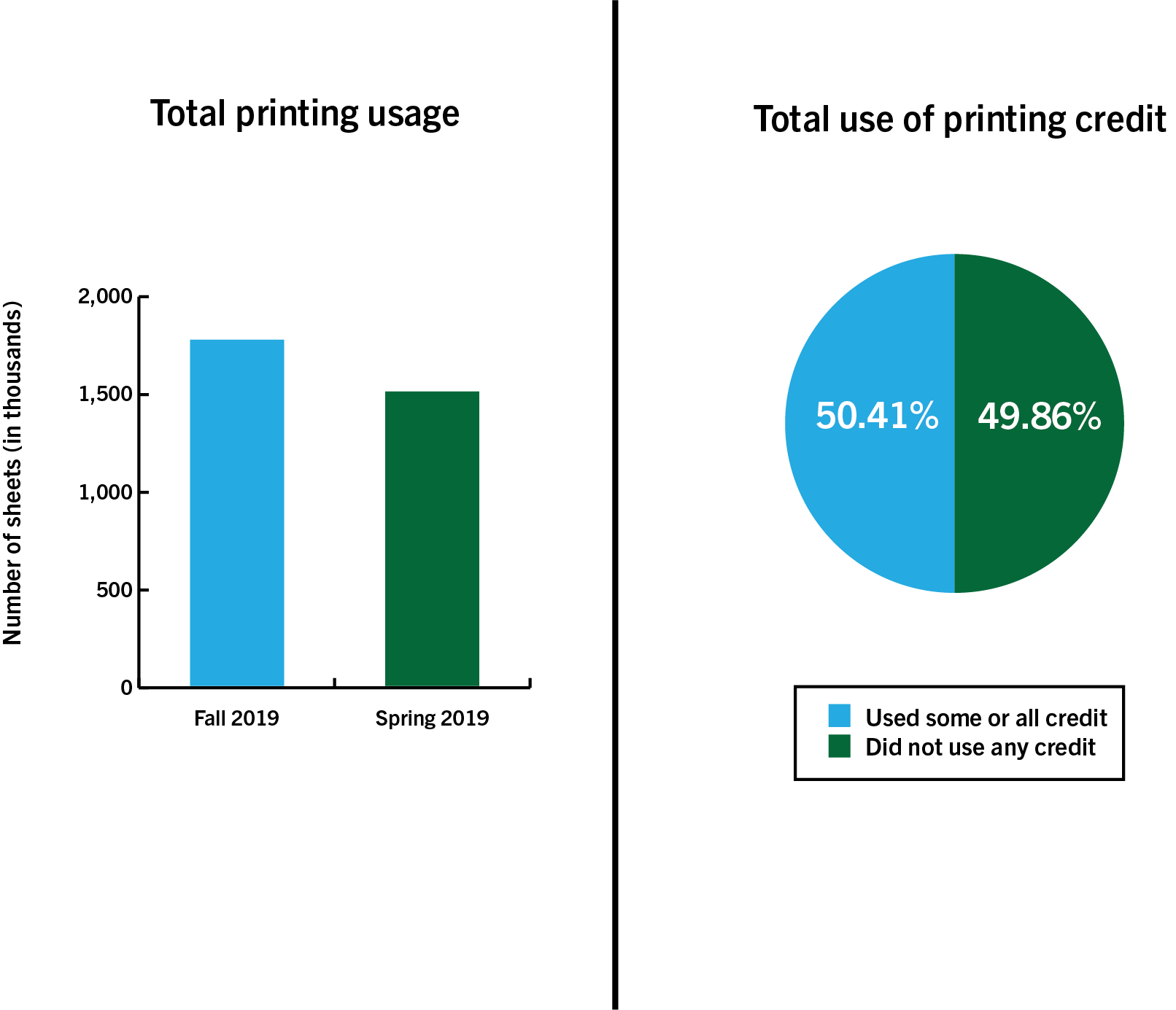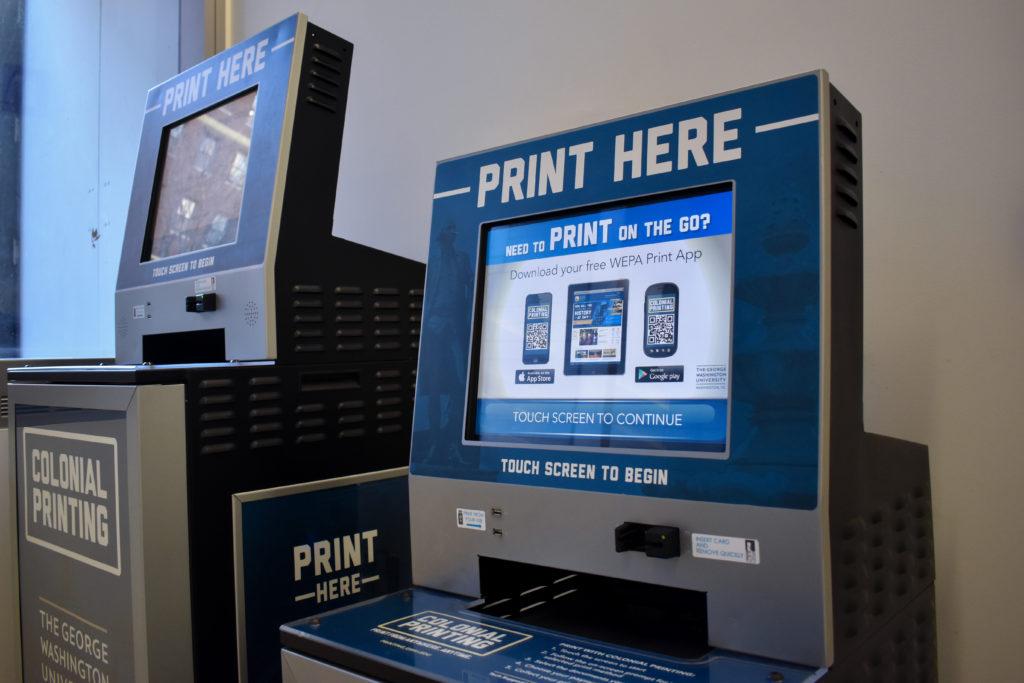Nearly half of the student body used some or all of their printing credit last semester after students received GWorld funds to be used at on-campus kiosks, officials said.
Officials granted students a $30 printing credit for the 2019-20 academic year last spring, alongside reductions in laundry and rental room costs. Former student leaders who advocated for reduced printing costs last year said the program demonstrates officials’ commitment to improving affordability for students.
University spokeswoman Crystal Nosal said officials plan to keep the $30 printing credit for students for “the next year.”
“Based on the usage data, this credit seems to currently be set at the right amount,” Nosal said in an email.
She declined to specify what feedback the University has heard from students about the credit.
The price for each side of a black-and-white single is nine cents, and a double-sided print job is six cents. Students must pay 32 cents per side for a color print job, according to the University’s printing cost webpage.
Robin Delaloye, the associate dean of student success and communications, said about 50 percent of enrolled students – or about 14,800 students – used some or all of their printing credit in the fall. About 820 students used all of their credit, while about 4,550 students used half or more of their credit, she said.
She said about 14,670 enrolled students – about 49 percent – did not use any of their allotted printing credit during the fall semester.
Delaloye said about 1.8 million sheets, which is about 2.6 million pages of paper, were printed at Colonial Printing kiosks during the fall semester between Aug. 26 and Dec. 20, which is about 17 and 18 percent more sheets and pages, respectively, printed than last spring.

Alyssa Ilaria | Graphics Editor
Former Student Association President Ashley Le said Executive Vice President and Chief Financial Officer Mark Diaz suggested granting students a printing credit to pay for the required printing. SA leaders rolled out a proposal in April to reduce printing, laundry and room rental fees, which the Board of Trustees approved in May.
“For those specific groups of students and for those specific courses, it really adds up to their costs for the semester,” Le said.
She said Diaz’s team conducted research on how much money to allocate to students, and SA leaders supported his suggestion to supply $30 in printing credits to each student per year.
Le said SA leaders wanted to reduce printing costs to improve sustainability, affordability and bolster previous SA efforts like the “Save A Million” campaign, which the SA launched in September 2017 encouraging students to reduce double-sided printing.
She said setting up a feedback form or survey on the WEPA kiosks for students to answer during or after completing a print job would be a “practical” approach for officials to garner feedback from students about printing jobs and costs.
“That could really help because the students who need to use the printing would be the ones who provide the feedback rather than students in general who may or may not use printing,” she said.
Nassim Touil, the former SA vice president for financial affairs, said officials were initially concerned that providing printing credits would lead to excess printing and wanted to ensure that the University remains sustainable while addressing student affordability. But he said research that Diaz and his team did demonstrated that most students did not print more than $30 worth of paper.
“Most students won’t be running out of it, especially since they factored in the cutting cost of price of printing from what it was originally, at the beginning of the semester, as well as giving the free credits,” he said.
Touil said the University’s decision last spring to reduce printing, laundry and room rental fees demonstrates officials’ commitment to improving affordability and the student experience.
Officials are also upping the number of free laundry credits this semester. Starting this month, students will be given 34 free loads of laundry, or 17 free washer-dryer cycles – five more cycles than given during the fall.
“Those are signs of good faith, that Diaz was ringing in a new financial era for GW, with the way they’re using money, with the way they’re aiding students financially,” he said.
Jarrod Wardwell contributed reporting.








